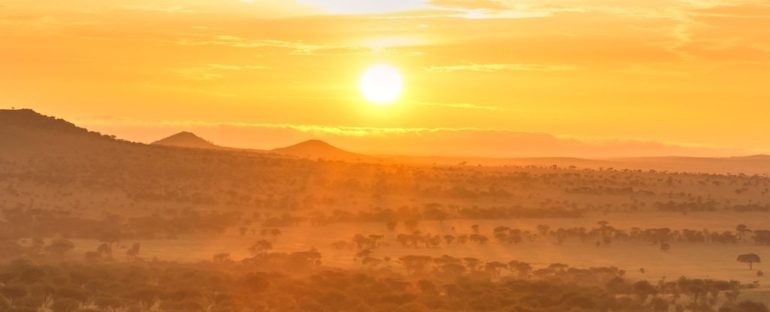Ancient, oscillating weather patterns similar to El Niño are chiefly responsible for environmental shifts in sub-Saharan Africa over the last 620,000 years, new research reveals – and they’re also likely to have played a big role in our evolution as a species.
The emergence of Homo sapiens from Africa is well established, and the new findings suggest a ‘climate seesaw’ between wet and dry periods in the region was at least as influential as advancing and retreating glaciers in establishing the path of ancient humans towards the humans of today.
Researchers analyzed 11 different land and ocean sedimentary records to build up an idea of climate change across Africa for the Middle to Late Pleistocene period, a crucial time in the evolution of human beings and their spread around the world.
“This alternation between dry and wet periods appeared to have governed the dispersion and evolution of vegetation as well as mammals in eastern and western Africa,” says paleoclimatologist Stefanie Kaboth-Bahr from the University of Potsdam in Germany.
“The resultant environmental patchwork was likely to have been a critical component of human evolution and early demography as well.”
The warming and the cooling of the tropical Pacific Ocean would have dramatically affected what’s known as Walker circulation – our conception of the flow of air around either side of the equator, which generates particular dry or wet conditions.
According to the researchers, lush and verdant environments associated with heavy rainfall swung from the east to the west of Africa and back again, with each switch taking about 100,000 years. Animals, plants, and humans would have responded accordingly.
While early humans would have had ways of adapting to shifts in climate patterns, the more resources there were in a particular place, the more likely it is that people would have opted to stick around at the time. As a result, populations probably moved as the conditions did.
“We see the archaeological signatures of early members of our species all across Africa,” says evolutionary archaeologist Eleanor Scerri from the Max Planck Institute for the Science of Human History in Germany.
“But innovations come and go and are often re-invented, suggesting that our deep population history saw a constant sawtooth-like pattern of local population growth and collapse. Ecotonal regions may have provided areas for longer term population continuity, ensuring that the larger human population kept going, even if local populations often went extinct.”
These ecotonal regions, or buffers between different ecological zones (like grassland and desert), are thought to have been very important in terms of where early humans settled and stayed, and they would have been driven by the Walker circulation.
With no actual ancient human DNA from this time period to go off, tracing the movement of hominins across the African continent does require some educated guesswork, as the researchers themselves admit.
However, it seems likely that this ‘seesaw’ pattern needs to be accounted for in addition to the patterns of various ice glacier shifts, when it comes to trying to figure out patterns of migration overall, and why people might have moved where they did.
“Re-evaluating these patterns of stasis, change, and extinction through a new climatic framework will yield new insights into the deep human past,” says Kaboth-Bahr.
“This does not mean that people were helpless in the face of climatic changes, but shifting habitat availability would certainly have impacted patterns of demography, and ultimately the genetic exchanges that underpin human evolution.”
The research has been published in PNAS.



